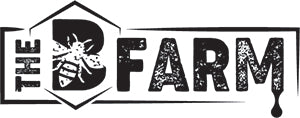Before you even begin beekeeping, being aware of the five key strategies to save a failing beehive is advisable. With this knowledge, you’ll have all the preparation you need for a difficult season.
1. Reduce the Entrance
If you notice that your hive is failing, your immediate concern must be how the bees will survive against other colonies and wasps. Hives in these conditions are susceptible to robbing from such invaders. Reduce the entrance to keep the intruders at bay.
2. Feed the Bees
A lack of food can exacerbate many common hive problems. Without enough honey, your bees won’t be able to fight whatever is making them weak. Furthermore, queens won’t lay eggs well if the hive doesn’t have adequate food supplies. Feed the ailing hive sugar water and see if it improves.
3. Add a Capped Brood
One of the five key strategies to save a failing beehive is to add a capped brood. As your colony shrinks in numbers, you can get ahead of the problem by adding a boost to its population by putting a frame of a capped brood into the dying hive. Just make sure you use a capped brood, as uncapped broods will provoke and confuse your bees.
4. Treat for Mites
Mites very often play a role in destroying a hive. If you notice a high mite count in your hive, try to fix the problem with mite control measures. To avoid damaging the hive, start with a mild approach to mite extermination. You can shake powdered sugar on them for the simplest solution. If that doesn’t work, it may be time to look into a store-bought mite control option.
5. Check on the Queen
A missing or dead queen is a very common reason for a hive’s decline, so check to make sure she’s still there. If the queen is present but you suspect there’s a disease in the brood, requeening could break the brood cycle and correct the issue. However, this should be the last option after each other method fails.
If you have an interest in honeybee nucs for sale in Jennings, LA, come explore the offerings at The B Farm!
